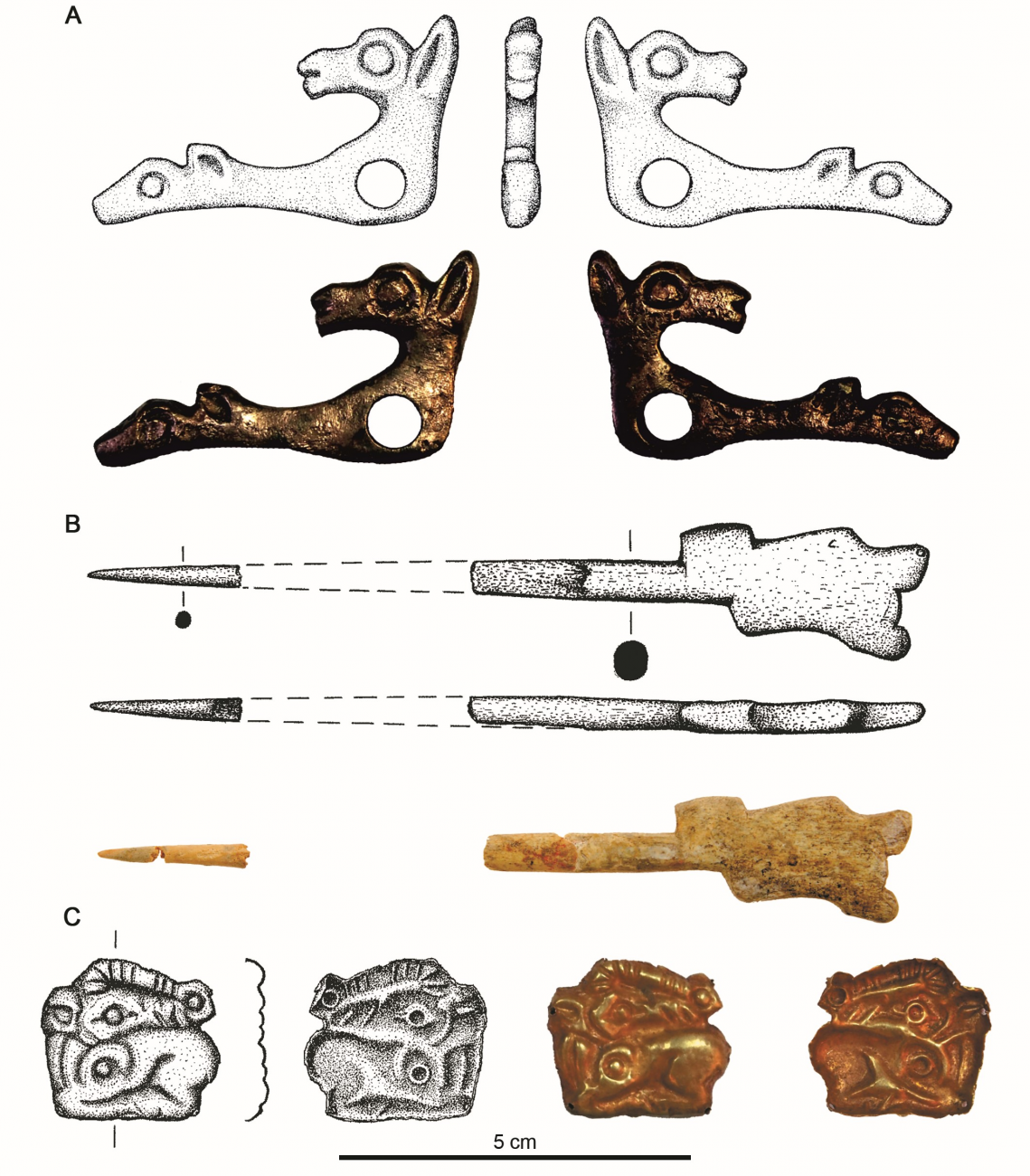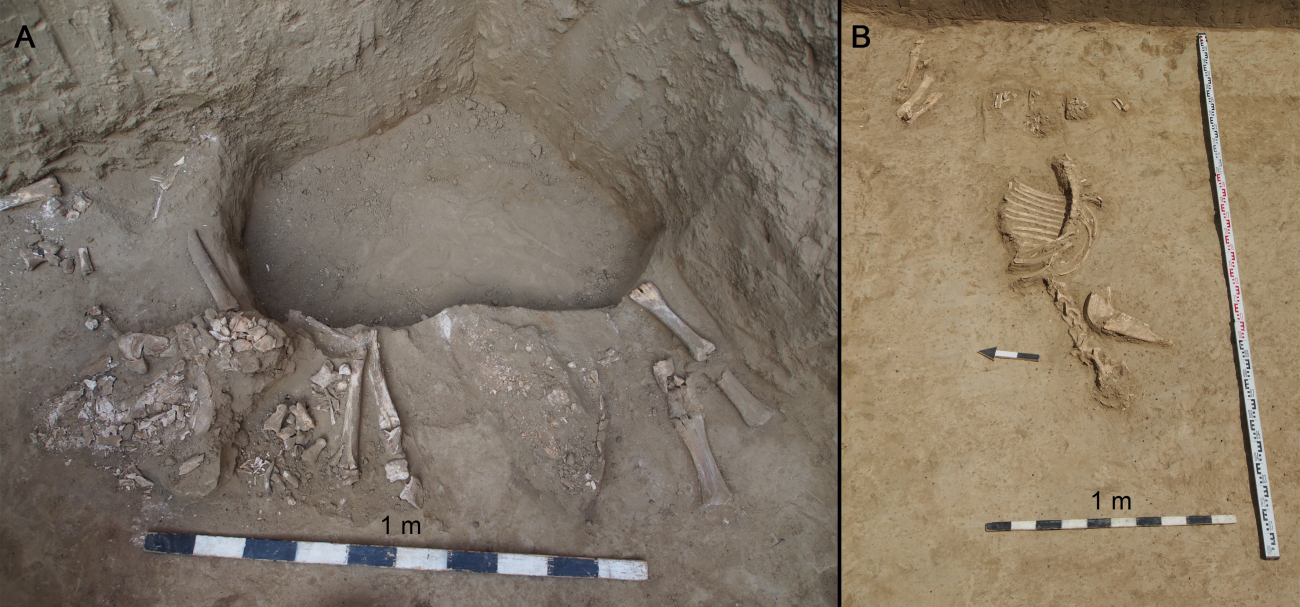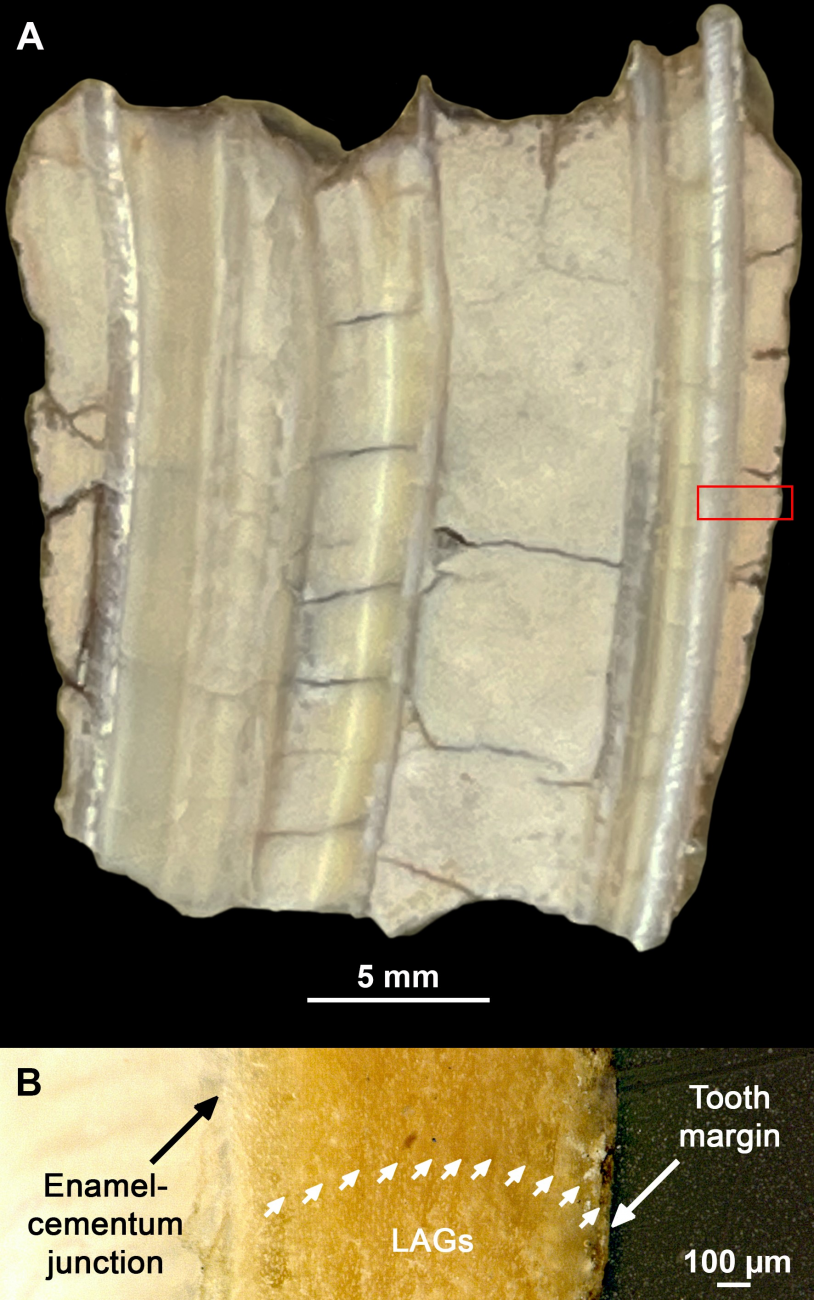
Natalia Prilepskaya and Andrey Bush, employees of the Laboratory of Ecology, Physiology, and Functional Morphology of Higher Vertebrates and the Laboratory of Behavior of Lower Vertebrates at the A.N. Severtsov Institute of Ecology and Evolution of the Russian Academy of Sciences (IEE RAS), together with colleagues from Moscow State University, the Institute of Archaeology of the Russian Academy of Sciences, the Institute of Plant and Animal Ecology of the Ural Branch of the Russian Academy of Sciences, and the Zoological Museum of Moscow State University, used the method of analyzing growth layers in the dental cement of mammals to establish the seasonality of burials and memorial events in the Novozavedyonnoye-III burial mound (Stavropol Krai, 430–300 BC). The study was carried out within the framework of the topic of the RSF grant No. 22-18-00108.
The Scythian archaeological culture was widespread in the Northern Black Sea region and the Ciscaucasia and was a component of the Scythian-Siberian community of horse nomadic cattle breeders. One of the main sources of information about the Scythians, who did not have a written language, are the works of their material culture: dishes, jewelry, weapons, clothing, etc. In the work carried out, the researchers addressed the issue of the seasonality of the life of the Scythians in the Central Ciscaucasia. The Scythians were a nomadic people, so the question of the seasonality of their territorial distribution has long been of interest to archaeologists. Since Scythian settlements in this region are unknown, the authors of the article decided to find out in what season of the year the Scythians buried their fellow tribesmen in burial mounds and held memorial events in order to find out whether the Scythians were in this region during a given period of the year.

The Novozavedennoye-III burial mound is located southwest of the village of Novozavedennoye (Georgievsk district of Stavropol Krai). The burial system under study originally consisted of more than a dozen mounds, but some of them were destroyed during agricultural work. Of the 11 mounds studied, 10 date back to the Scythian era, all with strong wooden and reed structures over the graves. Representatives of the Scythian military nobility buried in the mounds were accompanied by weapons, vessels, jewelry, ritual animals, including horses. All the graves were robbed in ancient times. The caste isolation of the Scythian elite is confirmed by objects from the Novozavedennoye-III burial mound, made in the Scythian animal style. The style of these images has characteristic features that distinguish it from the style of other nomadic cultures (Fig. 1). The chronological framework for the creation of the burial mound Novozavedennoe-III – 430–300 BC – was determined by antique imports, arrowheads, swords, bridle accessories, Scythian animal style, ceramic vessels, jewelry and other items.

In total, the remains of approximately forty horses were found in the Novozavedenny-III burial mound: 12-14 individuals were located in burial chambers, 10 in embankments, and 16-17 in ditches. The remains of horses in the form of whole carcasses and, possibly, sacrificial "skins" (with severed skulls and distal parts of limbs) were placed in burial pits together with people (Fig. 2). Fragments of horse skeletons in embankments and ditches are interpreted by archaeologists as traces of various memorial events - sacrifices, feasts, etc.
To determine the season of death of the horses, the researchers used the method of analyzing the recording structures in the teeth of mammals. The season of death was determined for 20 teeth belonging to 11 horses from different places of the burial mound. The teeth were selected from more than half of the Novozavedenny-III burial mounds. The results of the analysis of growth layers in dental cement showed that the studied horses, regardless of their location in Novozavedenny-III, died between May and October (Fig. 3). This shows that the Scythians buried their dead and held memorial events during some part of the warm season. The reasons for holding burials and memorial events in the Ciscaucasia during the warm season could have been both the cold winter, which made excavation work difficult, and certain religious beliefs of the Scythians. The results obtained indicate that the Scythians were present in the foothills of the Central Ciscaucasia during the warm season. Further studies of other burial grounds in the Ciscaucasia will clarify the findings and better understand the features of the life of the Scythians in this area.
The work was published in the Journal of Field Archaeology: Natalya E. Prilepskaya, Olga P. Bachura, Andrei G. Bush, Anatoliy R. Kantorovich, Vladimir E. Maslov, Natalya N. Spasskaya. 2024. Horse Teeth Shed Light on Seasonality in Scythian Mound Burials in Southern Russia, Journal of Field Archaeology.
